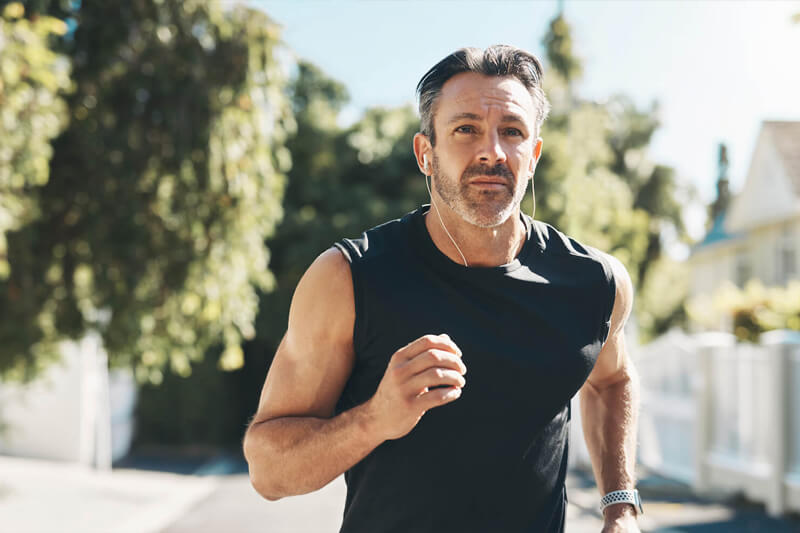DEXA Scan: Understanding Your Body
When it comes to maintaining optimal health, knowledge is power.
Understanding what’s going on inside our bodies is the key to addressing health issues early and preventing more serious conditions from developing. One powerful tool that medical professionals use to gain insight into patients’ health is the body scan. In this article, we’ll explore how the latest high end body scan technology of DEXA scan can help you better understand your body and allow you to devise successful treatment plans or training programs.
Why Choose DEXA Scan to Better Understand Your Body?
What differentiates a DEXA scan from any other body composition test is the amount of specific and thorough data that is produced from a standard report. Whether you’ve had multiple scans or are anticipating scheduling your first appointment, it is helpful to understand how to navigate your results to get to know your unique body composition.
Common alternative methods such as BMI, Bioimpedance, Bod Pod, and hydrostatic weighing are often used as substitutes for body composition health measurements. However, they can be dangerously misleading. Using these methods, you may see a margin of error ranging from 5 to 15%.
Whereas, not only a DEXA scan’s accuracy and precision ranges from 1 to 2 percent margin of error, it also provides additional information that BMI and alternative testing method can not, including:
- Visceral Adipose Tissue (VAT), which is a leading predictor of longevity, metabolic syndrome, and cardiovascular disease
- Skeletal strength, your risk for osteoporosis, and how you compare to others
- Muscle symmetry to identify how your lean, fat and bone mass compares in each region of your body
- “Skinny fat” and sarcopenia risks, which has been found to be an important predictor of cognitive performance
Understanding and Applying DEXA Scan Result
Interpreting and understanding your scan results will make you get the most of your visit and help inform a plan to reach your goals with the help of a trainer and nutrition coach. DEXA scan results include five general buckets of information related to lean mass (all tissues in the body except bone and fat), fat mass, bone density and visceral fat.
- Android to gynoid ratio describes the placement of fat mass within the body. People with a so-called “pear” shape store fat around the hips (gynoid), while an apple shape or android shape collects fat around the abdomen and stomach. A healthy android to gynoid ratio is about 1.0 for men and 0.8 for women.
- Total body fat percentage, written as %BF. Tracking this number over time shows you the impact of your nutrition and exercise regimen. %BF in DEXA is unique to DEXA and can’t be compared across other methods of body fat measurement. An even better indicator of change is monitoring your percentile as compared to other people of similar age, gender and race to you.
- Visceral adipose tissue (VAT) is a type of body fat that accumulates around the internal organs rather than under the skin, which is your subcutaneous fat. These fat cells grow larger if you consume more calories than you burn off through metabolism and exercise. VAT is associated with dangerous hormone activity that increases the risk of diseases related to metabolism, such as diabetes and heart disease. Too much visceral fat also raises the risk for gallbladder disease and breast cancer in women and may lead to worse outcomes for individuals who have cancer. Understanding your body’s visceral fat content can help you map a plan to reduce disease risk.
- Resting metabolic rate (RMR) estimates your body’s calorie needs at rest. The higher your RMR, the better you burn calories while exercising—this is known as metabolism. You can boost your RMR by increasing your muscle mass and reducing your body fat percentage with regular DEXA tests to keep you on the right track.
- Skeletal muscle mass (SMM) measures your bone mass. While SMM is only an estimate, DEXA provides the same level of accuracy for this metric as an MRI or CT scan. %SMM refers to the percentage of bone mass compared to total mass.
- Fat-free mass index (FFMI) compares the combined mass of your connective tissue, organs, bone, and muscle to your height. You can track your FFMI to see your progress in building muscle mass.
- Fat mass index (or FMI) is defined as the ratio of fat mass in kilograms to height in meters. FMI is different from BMI, which compares your weight to your height and does not account for differences between fat and lean mass.
- Intracellular and extracellular water measures the water both inside and outside your cells. More than half of an adult’s body consists of water, including the fluid within the blood, muscles, fat, and other body tissues.
The Power of Understanding Your Body Through Data
When you get a second or third DEXA scan, you have the benefit of comparing your results over time. But what if this is your first scan? That’s where the power of data comes in handy.
DEXA compares your results with the published national database so you can see exactly where you stand. The database incorporates reference data from the National Health and Nutrition Examination Survey (NHANES), which includes DEXA scan results from a collection of thousands of participants ages 8 and older from 1999 to 2004.
Looking at these numbers and understanding what they mean can guide your diet and exercise choices. For example, if you have low muscle mass and high body fat compared to others of your age and sex, you may want to focus on reducing fat and building lean mass.
Fully understanding DEXA scan results and your body is important as you continue to gauge progress towards your goals. If you still have questions or would like to schedule an appointment with one of our experienced practitioners, be sure to contact Dexacan, the Canadian leader in private DEXA scan provision today.




